Teaching With Manipulatives And Visual Models (Grades 1-5)
$169.00 – $239.00
Are you an elementary math teacher? Are you interested in teaching with manipulatives and visual models? Then this is an online professional learning experience you won’t want to miss.
Manipulatives and visual models are powerful tools for building conceptual understanding. But teaching them is not always easy.
Register today for Teaching with Manipulatives and Visual Models, and in no time, you’ll confidently teach any standard with arrays, area models, number lines, and more.
In this workshop, you’ll learn practical strategies for teaching manipulatives and visual models in real classrooms. Registration includes all the print and digital resources you need to bring these engaging visual model activities back to your classroom.
Each virtual session is conducted in real time with a live facilitator. Participants earn a total of 6 PD Hours.
Full workshop details below. Workshop dates and times are shown to the right, below the dropdown menu.
For many math educators, teaching with manipulatives and visual models can feel like speaking another language. Most of us never learned them in school. And with so much content to cover, they might feel like just one more thing packed into the curriculum.
But when it comes to conceptual learning, there’s just no substitute for teaching with manipulatives and visual models.
In this workshop, you’ll learn the theory behind visual models, as well as the practical strategies to bring visual models to your classroom.
The Challenges of Teaching with Manipulatives and Visual Models
Does it feel like the visual model lessons in your textbook leave your students more confused than before?
In many classrooms, manipulatives sit on the shelves. And when they are used, they can become a distraction, with students making a mess or just playing with them like toys. So how can you be sure that teaching with manipulatives and visual models is helping them to learn the important concepts?
If any of these challenges sound familiar, this workshop is for you. By the end of this session, you’ll have all the tools and concepts you’ll need to get the most from visual models and manipulatives.
How to Get the Most from Teaching with Manipulatives and Visual Models
Visual models and manipulatives help students progress through the concrete, representational, and abstract phases of conceptual understanding.
As students develop their understanding of numbers, operations, and associations, it’s important for them to be able to both interpret and create physical and visual models.
In this workshop, you’ll learn the the visual models that best support conceptual understanding in middle school. We’ll also explore planning and assessment as it relates to teaching manipulatives and visual models.
Topics include the following:
- Numbers: Counting, Base-10 understanding, and fractions
- Operations: How to model all four basic operations
- Associations: Modeling equality, patterns, and functions
- Common visual models: arrays, number lines, and area models
- Aligning to Your Grade-Level Standards
- Visual Models Planning and Assessment
- Considerations for digital and remote learning
Workshop Overview
Teaching with Manipulatives and Visual Models in Grades 1-5 consists of 6 hours of hands-on, interactive professional learning. Sessions are conducted in real time, with a live facilitator. You’ll solve problems and engage in discussions with fellow educators.
As a participant, you’ll learn how to teach with manipulatives and visual models, and you’ll receive copies of all the print and digital classroom resources to help you bring what you learn back to your classroom the very next day!
Unit 1: Numbers and Scale – Learn the importance of using scale models to support numeracy.
Unit 2: Modeling Operations – Explore strategies to represent operations with whole number and fractions with physical and visual models.
Unit 3: Associations and Standards – Use models to represent equality, patterns, and functions. Connect models to your grade level standards.
Unit 4: Planning and Assessment – Learn to plan units and lessons that incorporate visual models. Use manipulatives and visual models for formative and summative assessments.
Save Your Seat
Enrollment is open to all elementary school teachers, administrators, instructional coaches, tutors, and homeschool parents.
We accept payment by credit card or purchase order.
For more information on any of our workshops contact us at [email protected]
If your school or district is interested in group pricing and custom professional development packages, schedule a free consultation with one of our education experts.
For more on teaching with scale models, read our article, How Visual Models Level the Playing Field for All Math Students.
About the Presenter
 Jeff Lisciandrello is an expert in math curriculum and student- centered instructional practices, with over 15 years experience as a classroom teacher, curriculum designer, and instructional coach. In Jeff’s workshops, educators, don’t just hear about differentiation and inquiry-based learning, they experience them first-hand. You can connect with him via Twitter @EdTechJeff
Jeff Lisciandrello is an expert in math curriculum and student- centered instructional practices, with over 15 years experience as a classroom teacher, curriculum designer, and instructional coach. In Jeff’s workshops, educators, don’t just hear about differentiation and inquiry-based learning, they experience them first-hand. You can connect with him via Twitter @EdTechJeff
| Date(s) | May 2022, October 2022 |
|---|
15 reviews for Teaching With Manipulatives And Visual Models (Grades 1-5)
Related products
-
Lesson Plans and Classroom Activities
Student Goal Setting Activity | Google Slides
$3.00 Add to cart -
Lesson Plans and Classroom Activities
Subtraction within 100 using Base-10 Blocks Activities | Digital Visual Models
$3.00 Add to cart -
Lesson Plans and Classroom Activities
Addition to 100 using Base-10 Blocks Activities | Digital Visual Models
$3.00 Add to cart -
Lesson Plans and Classroom Activities
Multiplying Fractions with Area Models Activities | Interactive Google Slides
$5.00 Add to cart

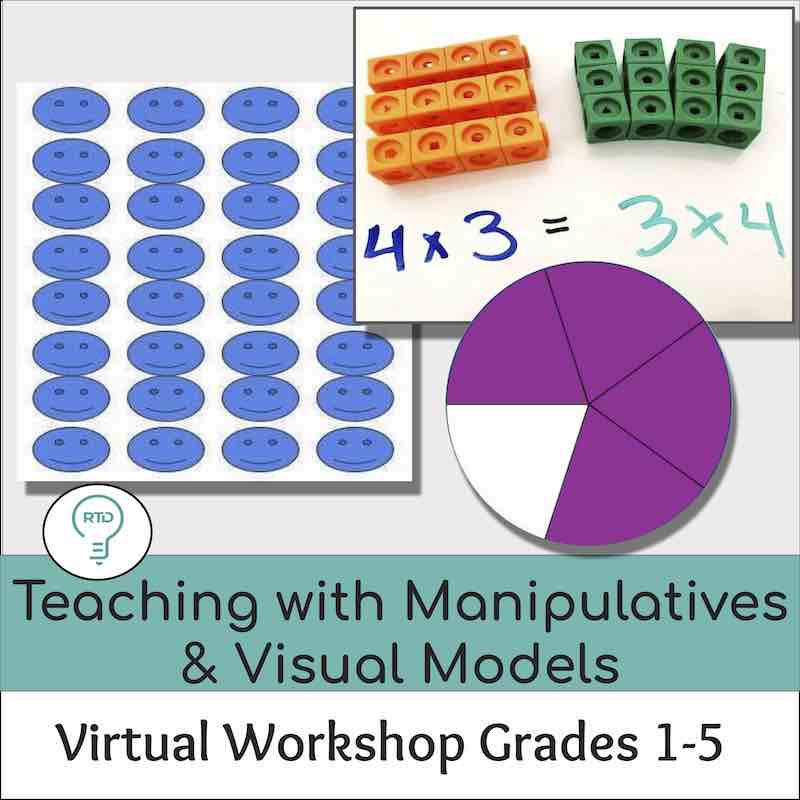
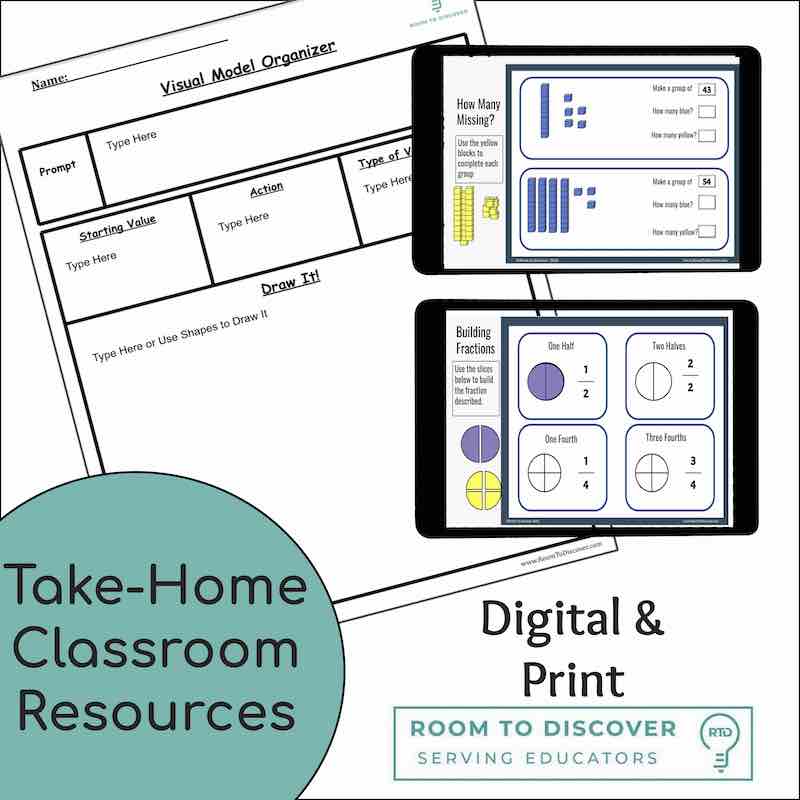


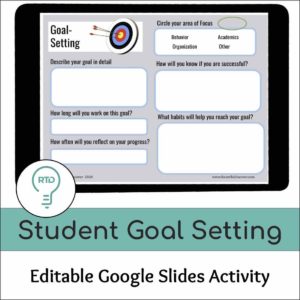
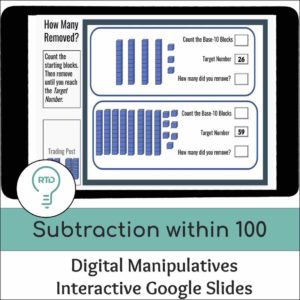
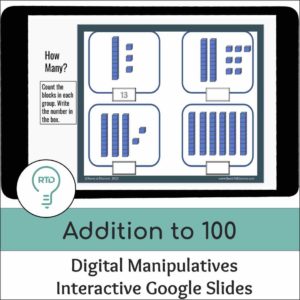
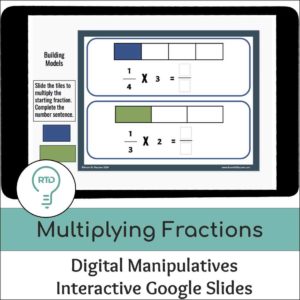
Tracey S. –
The presenter had really good energy.
Larry A. –
We had lots of time to try the organizers and talk about how we used them.
Lou U –
There were a lot of good tips for how to best use manipulatives in the math classroom, especially fraction operations. Lots of great ideas and discussion of how to present math concepts in clear, concise, creative ways our students can understand.
Kendria G. –
It was informative and it was hands on. I feel like every math teacher must attend this workshop to make math a visual reality in the classroom.
Danielle T. –
Interactive experience and the wide range of topics it covered. Could benefit almost any grade.
John C –
We really took our time discussing with other teachers, RTD puts teaching math into better perspective.
ZF –
Double number lines! Practical use of resources!
Ashley A –
I enjoyed the various manipulative and collaborative opportunities. It was engaging, interesting, and fun
Belinda Komarica –
I loved the progression of the models within each topic. It is essential for educators to be aware of the development of a concept and its progression. This workshop highlights different representations by making connections between those representations.
Daniel Ramirez –
I appreciated how the visual models progressed within the activities. Additionally, it was nice that the visual models allowed for students to not only interpret but to create them as well. Lastly, I found it beneficial that the models were created using the Google suite as they seem to work better for our students since a large portion of students are using district Chromebooks.
Mel Comerchero –
I like seeing the different ways to present visual models that would work for a virtual classroom. It is a great time to reflect on and discuss our math practice and think about why we use the tools we do.
Cynthia Gonzalez –
I love how simplistic the concepts were. The visuals were easy to follow. It felt very informative, and I just wish it was longer!
Lindsey Omark –
Time to engage with materials! Getting us to engage right of the bat!
Abiola Atoro –
I really enjoyed the inspire, share, and reflect activities. I feel this workshop helps in the improving your use of visuals and manipulatives.
Andrea Napolita –
Presenter was extremely knowledgable of the standards and the good/bad that come along with them. I only wish we had a bit more time in the workshop, it was fantastic!